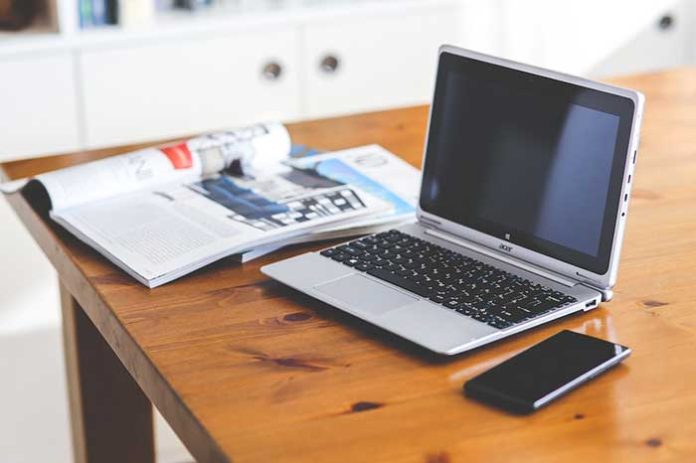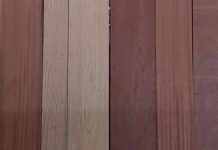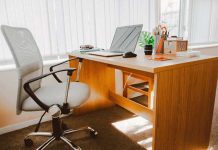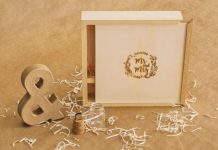Looking for the best wood for a desktop? Sit tight as we present the 9 best wood types to make your desktops 10x better!
Timber desktops have something in them that enhances the elegance of a workspace. The warm hues offer a touch of sophistication, while the natural grain patterns create an inviting atmosphere. Besides the aesthetics, their durability and sturdiness add to their functionality.
Choosing suitable timber matters a lot if you plan to make a DIY wood computer desk. Worry not more; we are here to help. This article unveils the nine excellent types of wood that are the perfect combination of aesthetics, durability, and budget.
What are the Best Woods to Use for a Desktop: Spolia Picks!
| Wood Type | Durability | Appearance | Workability | Maintenance | Sustainability |
| Oak | High | Rich hues, unique grain patterns | Hard to work with | Moderate | Moderate |
| Maple | Very High | Light, creamy color, smooth grain | Hard to work with due to density | Moderate | Moderate |
| Cherry | High | Reddish-brown hues, smooth texture | Challenging due to dense fibers | Moderate | Low |
| Pine | Moderate | Light-brown, rustic grain patterns | Easy to work with | High | High |
| Cedar | Moderate | Light reddish-brown, fine straight grain | Moderate | Moderate | High |
| Cocobolo | Very High | Reddish-brown with black streaks | Hard due to density | High | Low |
| Birch | High | Light color, fine and straight grain | Easy to work with | Moderate | Moderate |
| Bamboo | Moderate | Modern look, wavy grain pattern | Easy to work with | Moderate | High (renewable) |
| Walnut | High | Dark, rich, and luxurious grain | Easy to work with | High | Low |
From the rich warmth of mahogany to the sleek modernity of bamboo, we explore a myriad of exquisite options to suit your unique taste and elevate your workspace. Here are the eight best wood for desktops you can choose from.
1. Oak
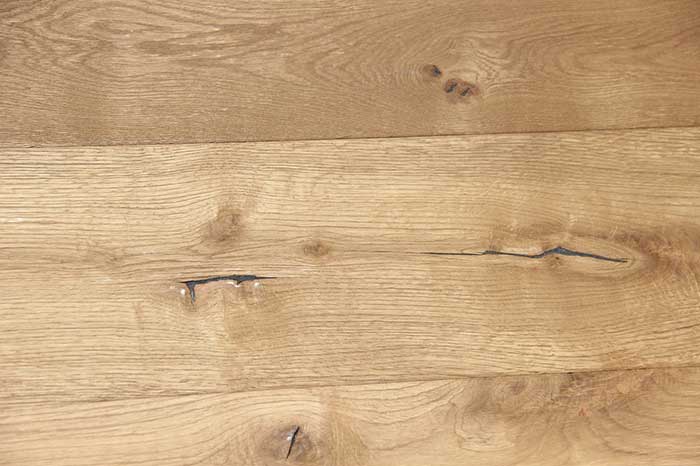
With high durability, strength, and natural beauty, oak is one of the best wood for a computer desk – or any other desktop surface. It has rich hues and a unique wood grain pattern that adds to the character and sophistication of your workspace.
Its dense and closed grains provide stability and resistance to wear and tear. Moreover, the oak is high in tannin content, making it resistant to insect and fungal infestations. With an elegant look and sturdy nature, oak is a timeless choice for those looking for a durable and stylish desktop.
| Pros | Cons |
| Relatively cheaper | Quite heavy for handling and transportation |
| Suitable for many weather conditions | Hard to use |
| Great strength and sturdiness | Prone to scratching if a mount is attached |
2. Maple
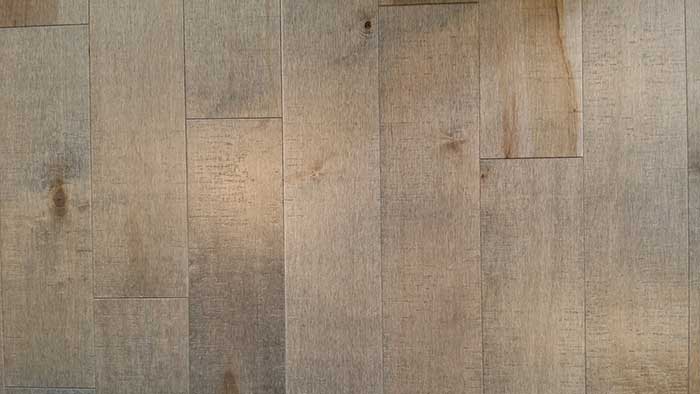
Maple is another top choice of crafters for desk surfaces. It is one of the hardest wood in the world, with a Janka hardness rating of 1450. It offers remarkable durability, strength, and resistance to scratches, dents, and nicks. The wood has a dense composition, making it ideal for variable uses- you can use it for work, study, or just decoration.
Maple wood brings timeless beauty and charm to the furniture. Its creamy, light color, warm hue, and smooth grain pattern promise an excellent visual appeal to your desktop. Moreover, it can be stained easily, so you’d have no problem crafting the entire room furniture with it. We bet it would look incredible all together!
| Pros | Cons |
| Resistant to warping, cracking, or splitting | Hardness might cause difficulty in work |
| Moisture resistant | Expensive than other species |
| Ideal for staining | Require maintenance |
3. Cherry
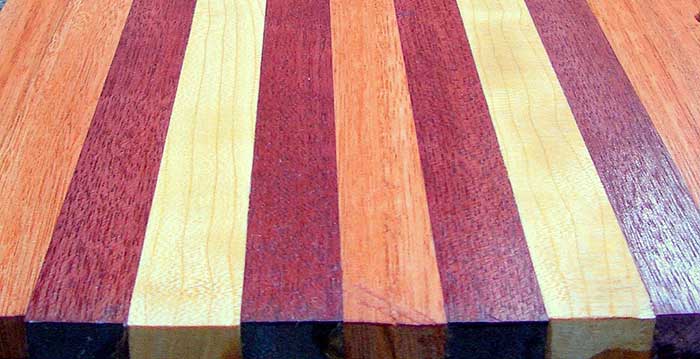
Cherry is a popular wood for desktops, but it is pretty tough to work with. Due to its dense fibers, painting, varnishing, or polishing is a torturous process with numerous attempts and hours of waiting. However, you’ll never be happier once you put in the effort and time.
It’s worth all the trouble! The smooth-grained texture adds a luxurious touch, while the dark and light reddish-brown color gives a striking visual appeal. The Cherry wood brings sophistication, refinement, and elegance to desktops.
Moreover, it is hard, durable, and lasts a lifetime with minimal maintenance. Its tight grain pattern promotes stability, reducing the risk of warping or splitting with daily use. A wood that brings beauty and strength? Count us in!
| Pros | Cons |
| Luxurious and elegant look | Expensive than other hardwoods |
| Easy to sculpt, carve, or shape | Difficult to finish |
| Smooth texture with attractive reddish-brown hues | Darkens when exposed to sunlight |
4. Pine
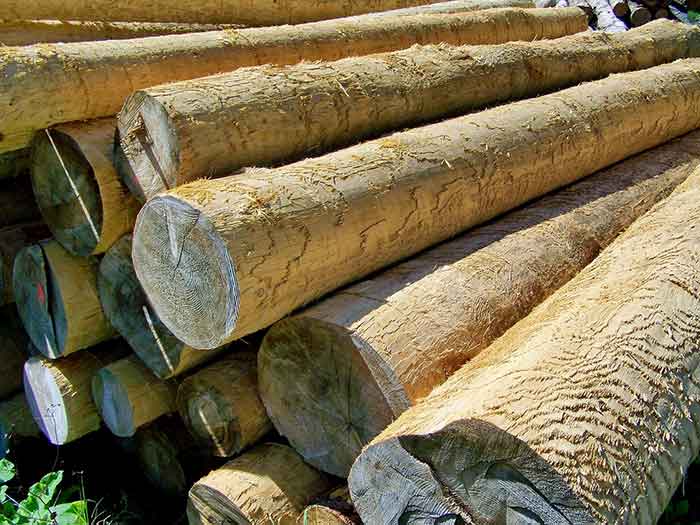
Pine is the perfect choice if you are looking for a budget-friendly option for the best desktop wood. It is one of the cheapest woods, but does that mean it compromises the look or stability? No way!
The light-brown colored wood embodies a perfect balance of aesthetics and functionality. Warm tones and light color lend a rustic charm, while unique grain patterns and knots add to the piece’s character.
Pine is a versatile wood that fits most office furniture trends, offering easy customization and personalization options. Its durability, strength, and light weight make it ideal for everyday use. However, it requires extra care against scratches and dents since it is softer than other woods.
| Pros | Cons |
| Cost-effective | Prone to nicks and dents |
| Decently hard-wearing | Require more maintenance than hardwoods |
| Versatile for rustic or modern designing | Contain knots or other defects |
5. Cedar
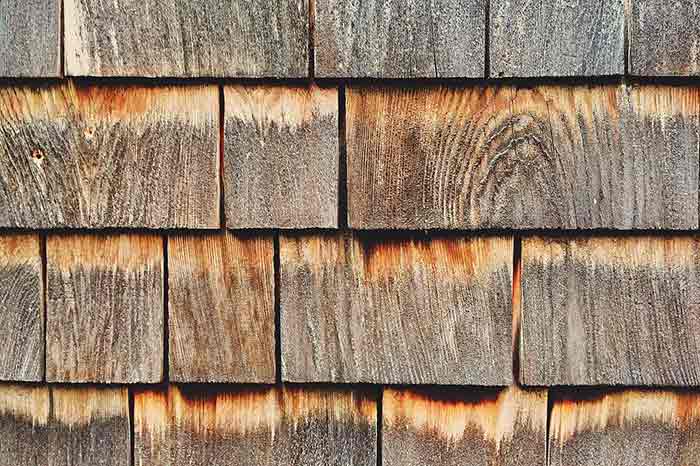
Cedar is naturally rot, decay, and moisture-resistant wood, making it a top choice if you plan to place your desktop near the window or on a balcony. It is resistant to insect or fungal infestation and offers stability and longevity.
Thanks to cedar’s straight grain, fine texture, and light reddish-brown color, you can craft a visually striking desktop. It is lightweight and easy to move around but durable enough to sustain most usage conditions.
Cedar has a porous texture, which makes it challenging to finish. But once polished and sealed effectively, it retains its aesthetics for a long time. The wood type is famous for its distinct natural aroma, creating a refreshing and calming environment. However, it might not be for everyone, so check before buying it.
| Pros | Cons |
| Naturally resistant to moisture and insect attacks | Expensive |
| Durable and lightweight | Prone to scratches and dents |
| Available in different dimensions, textures, and grades | Can sustain a stain without seal |
6. Cocobolo
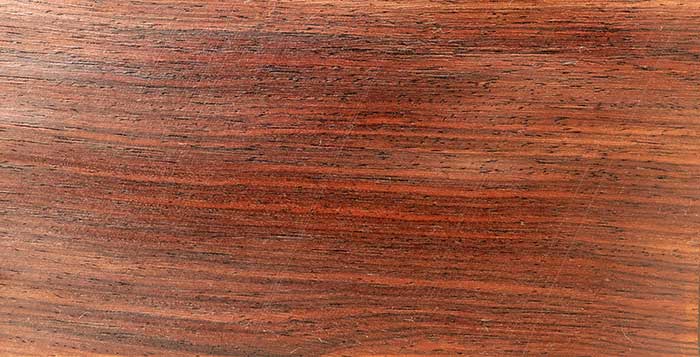
Cocobolo is a rare and exotic wood species considered as one of the most beautiful and most expensive woods in the world. A cocobolo desk stands out as the epitome of elegance and luxury when it comes to aesthetic workspaces.
Renowned for its exquisite beauty and durability, the cocobolo desk possesses a distinct reddish-brown hue with often-present black streaks and stunning grain patterns. Its rich tones and lustrous finish exude a premium aura, making it a preferred choice for sophisticated and timeless desktops.
As high as it is on visuals, cocobolo is nothing low on strength and durability. The tropical hardwood boasts exceptional density and hardness, rendering it resistant to wear and tear. However, it is pretty heavy, which poses a challenge while handling premium lumber.
| Pros | Cons |
| Attractive color tones and consistency | Highly expensive |
| Resistant to rot and insect infestation | Not widely available as other wood species |
| Able to hold different stains, colors, and translucent finishes | Requires frequent maintenance |
7. Birch
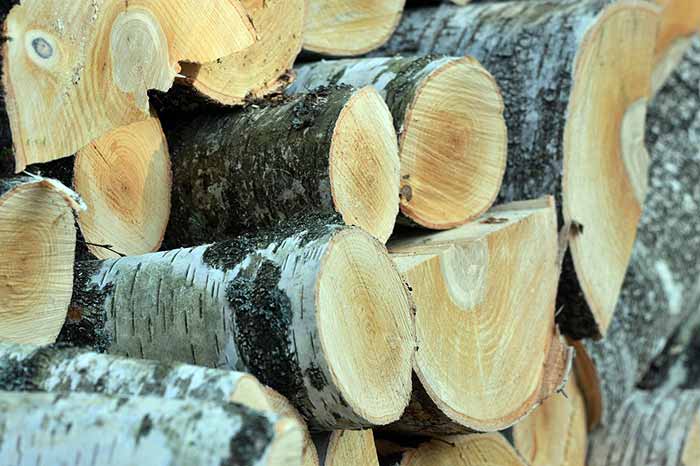
The Birch is one of the best wood for desktops due to its durability, stability, and unique appearance. It is highly dense and has a highly stable surface, making it a durable choice for multi-functional desks. The Janka hardness value for birch is 1260, a good rating for building a computer desk.
Birch is a strong wood with knots-free and rot-resistant capability. It is lighter in color, has a fine grain pattern, and straight strain, offering a unique look. However, the best thing about birch is its versatility. You can play with its look to give it a modern finish or go with a rustic appearance – it works both ways and works well!
Birch is the perfect choice for wood tabletops if you want to bring a touch of natural beauty to your workspace.
| Pros | Cons |
| Easy to work with | Not the hardest wood |
| Able to take many stains and finishes | Change in appearance depending on the stain |
| Highly dense and stable | Not widely available |
8. Bamboo
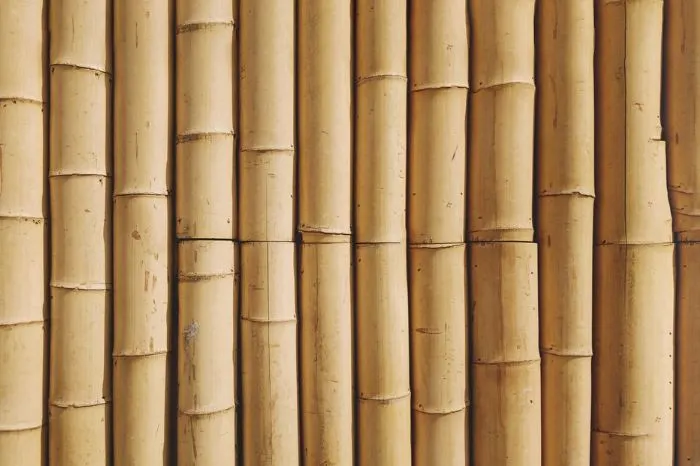
We understand why bamboo appearing in this list might seem uncalled for, because it’s technically a grass. However, the plant grows into products that could pass for a tree, which is why it can be used to make furniture. Although bamboo is rather thin, it’s modern style and, despite its wavy grain pattern, has some kind of a classy look to it, which would perfectly fit into any office.
| Pros | Cons |
| Stable and Hard | Susceptible to termites and pests |
| Renewable and Recycleable | It is expensive than other wood types |
| Moisture-resistant | Poor durable in it’s natural state |
9. Walnut
Walnut is like oak’s moodier sibling. It’s ideal if you want a darker vibe with a touch of elegance. Picture a gothic-style office, maybe with leather chairs and sleek decor. Walnut desks, known for their durability, can endure years of use. However, the deep, rich color that makes them stand out can lighten over time, something to keep in mind.
It doesn’t bend or chip much, making it tough against daily wear and tear. Water and mould? Not a big deal for walnut—it holds up well. If you’re someone who works long hours, stacking papers and balancing mugs of coffee, this desk can handle the chaos.
That said, neglecting it isn’t wise. A yearly resealing is key. Show it some care, and it’ll repay you by staying beautiful for decades. But, there’s a catch—walnut doesn’t come cheap, so expect to spend a bit more for its timeless quality.
| Pros | Cons |
| Beautiful, rich, and unique grain | Expensive compared to other woods |
| Strong and fairly durable surface | Fades in direct sunlight |
| Easy to work and finish | Requires regular care and maintenance |
Final Verdict
When it comes to wood type for your desktop, there is no right or wrong. While hardwood offers durability and strength, some softwood, like pine, can be great options too. You can go for an aromatic experience with cedar or sophisticated elegance with cocobolo. The choices are endless!
In our quest for an ideal workspace, we have listed our seven picks for the best wood for desktops. You can choose per your preferences, surrounding furniture, the purpose of the table, and budget. Whether your focus is durability or visual appeal, these wood types can help you balance aesthetics and functionality perfectly.


